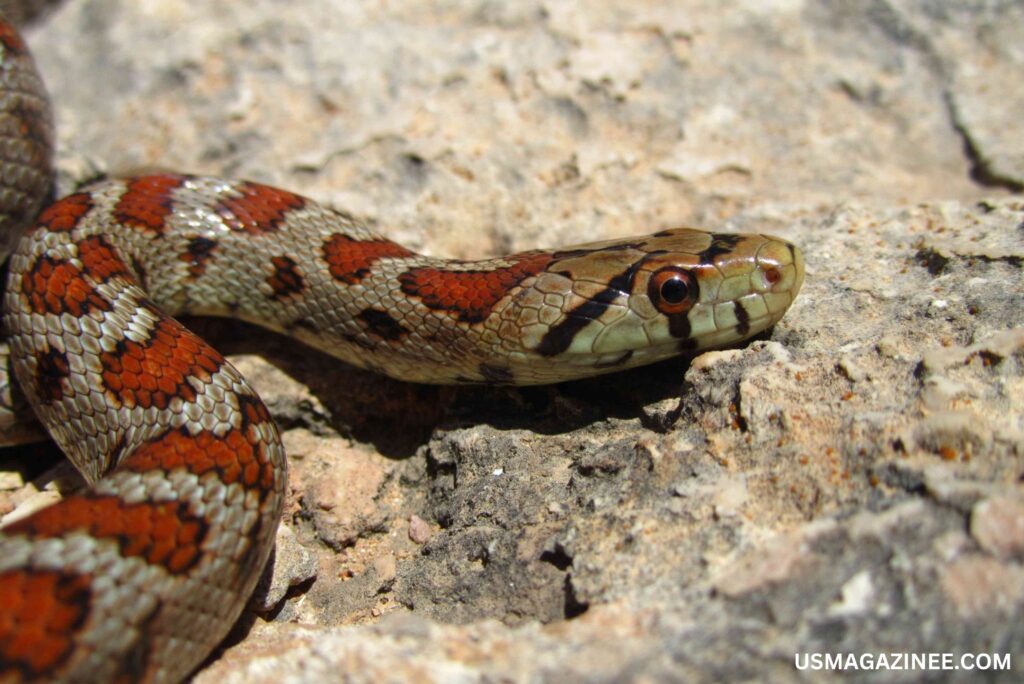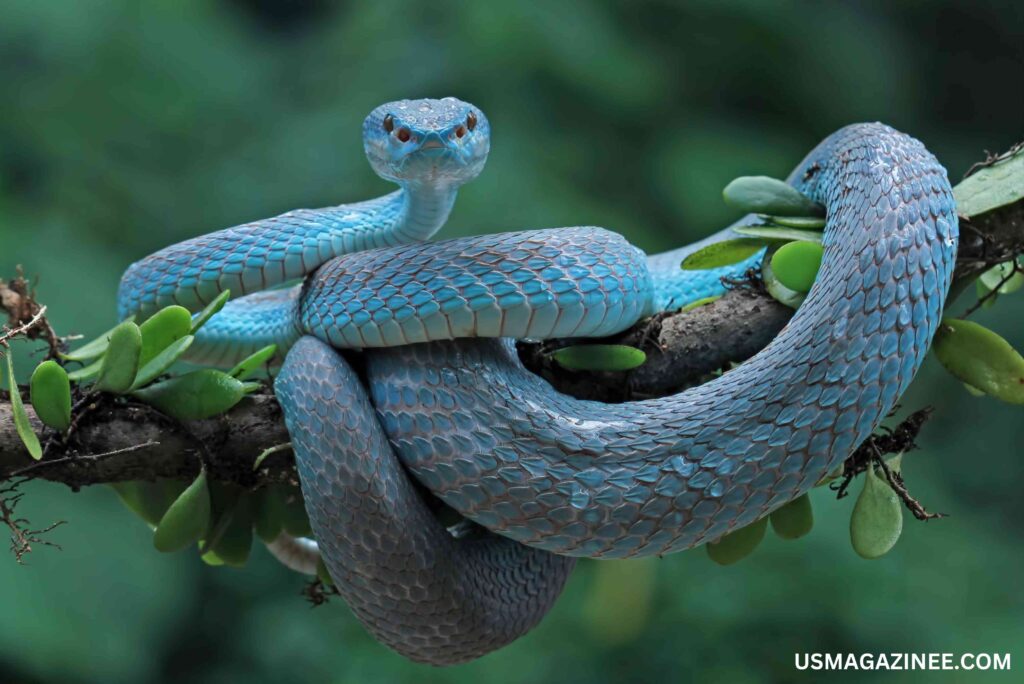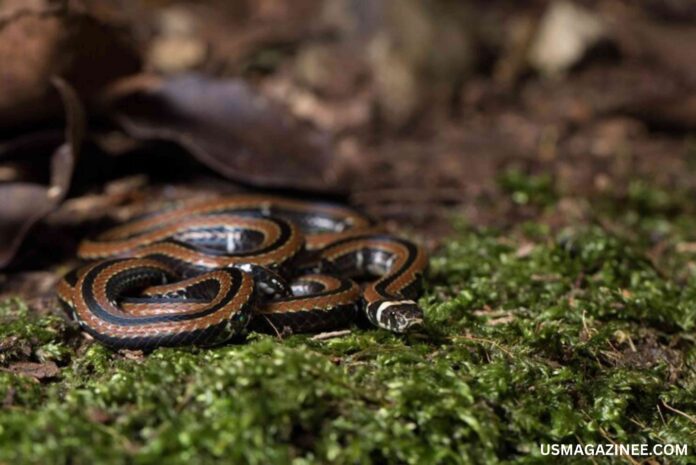What do you picture when you think of herp highlights episode timber rattlesnake kinship analysis? The scary sound of a rattle, a warning hiss, or maybe the sight of them moving through the bushes in North America? Well, if you’re interested in these interesting snakes and their wild lives, you won’t want to miss the Herp Highlights show on Timber Rattlesnake Kinship Analysis!
This piece will talk about what makes this episode so special. It will look at the kinship analysis of timber rattlesnakes and show how these animals interact with each other and their surroundings. For people who are interested in herpetology or just want to learn more about them, this study is a must-read. It helps us understand their behavior, ecology, and conservation needs.
Table of Contents
ToggleA Brief Look at Timber Rattlesnakes
One of the most famous and well-known types of rattlesnakes in North America is the timber rattlesnake, which is also known as Crotalus-horridus. These poisonous snakes can be recognized by the rattles on their tails, which they use to let others know when they feel threatened. But these animals are much more than just their sounds. Researchers are only just starting to fully understand how timber rattlesnakes live and behave in groups.
This episode of Herp Highlights is about Timber Rattlesnake Kinship Analysis. It gives viewers a close look at how these snakes interact with each other and their surroundings. This episode gives a fresh look at the social behavior of a species that isn’t always well known by focusing on kinship, or how rattlesnakes interact with their own kind.
How do I use Herp Highlights?
Herp Highlights is a great way to learn about the fascinating world of snakes and amphibians if you’re new to the field of herpetology. The show goes into great detail about the biology, behavior, and protection of these rarely seen animals, like lizards, frogs, and snakes.
Each episode focuses on a different animal or environmental issue. This episode is all about the Timber Rattlesnake. There’s a fun, easy-to-understand way to learn about these animals that works for everyone, from animal lovers who are just starting out to experts.
Figuring out how ratsnakes are related
In simple words, kinship means the bonds between family members. Animals’ family relationships can affect how they act, how they interact with others, and even how they stay alive. Relationships between Timber Rattlesnakes are very important to how they act toward each other.
Rattlesnakes usually live alone, unlike many other animals that live in close-knit families. But experts have found that there may be more to their social behavior than they first thought by looking at their kinship. This episode looks at how Timber Rattlesnakes might form “family bonds” and what these connections mean for their survival.
Where the timber rattlesnake lives
Timber Rattlesnakes live in a wide range of ecosystems, from mixed woods to deciduous forests. They are mostly found in the eastern United States. They like to live in places with lots of greenery and hiding places so they can hunt for food and avoid being caught.
For kinship research to work, it’s important to know where the Timber Rattlesnake lives. Scientists need to know where these snakes live and how they get around to stay alive. We get a close look at the places these rattlesnakes live, which has an effect on how they interact with their surroundings and other rattlesnakes.
Why it's Important to Study Rattlesnake Behavior
Why is it important to look into how rattlesnakes act? The way an animal acts shows us a lot about its world. It shows how they find food, how they change to their environment, and how they have babies. Scientists can learn about rattlesnake social interactions and how they react to changes in their surroundings by watching how these snakes act.
In the show, viewers see a number of behavioral studies, such as how the snakes mark their territory and how they mate. This kind of research helps to show the more complicated parts of rattlesnake family relationships that are often missed.
How their family ties affect how they act
Animals’ relationships with each other can have a big effect on how they act, and rattlesnakes are no different. In some species, family ties can help them hunt together, protect each other, or even share a home. Timber Rattlesnakes may change how they hunt for food, where they migrate, and how they defend each other from predators based on their family relationships.
The episode shows how rattlesnakes might connect with relatives when they are young, which gives us useful information about how they stay alive. Kinship analysis shows that Timber Rattlesnakes usually live alone, but they do have a complex social system with family members, especially when it comes to having babies.
Things that make timber rattlesnakes unique

What is different about Timber Rattlesnakes? These snakes are unique in the world of reptiles. Their colors are bright and they have special ways of hunting. Their bodies are thick and strong, which helps them keep warm, and their bright design helps them blend in with the forest floor.
Another interesting thing about them is the rattle at the end of their tail. Not only does it scare away possible danger, but it also lets rattlesnakes talk to each other. The episode goes into more detail about these unique traits and shows how they help the snake stay alive and stay connected to its family.
What the timber rattlesnake does for ecosystems
Timber Rattlesnakes are very important to the landscapes they live in. They help keep small animals, like rodents, in check because they are top predators and can hurt plants and crops if they get too many of them. Rattlesnakes help the whole ecosystem by keeping these groups in check.herp highlights episode timber rattlesnake kinship analysis
This show goes into detail about the rattlesnake’s effect on the environment and how its presence (or lack of presence) can cause changes all over its habitat. Looking at their family relationships also shows how different groups of rattlesnakes may affect the health of their habitat as a whole.
Actions to Protect Timber Rattlesnakes
Timber Rattlesnakes are in a lot of danger because people are destroying their environment and poaching them illegally. This means that protecting the environment is more important than ever. The Herp Highlights show stresses how important it is to learn more about and protect these amazing animals.
Scientists are trying to learn more about the relationships and behaviors of Timber Rattlesnakes so that they can come up with better ways to protect them. People who work to protect species can help keep rattlesnakes alive and make sure they stay a part of the ecosystem for future generations by learning how they interact with each other and their surroundings.
Methods used in science for kinship analysis
Kinship analysis uses complex scientific methods like genetic tests, radio tracking, and watching how people act. In the Herp Highlights episode, viewers learn about the ways experts study the relationships between rattlesnakes.
Researchers can see snakes’ moves, interactions, and behavior in real time by tagging and following each one. Genetic testing helps scientists figure out how rattlesnake families are related and how genetically diverse rattlesnake groups are. These cutting-edge methods give us useful information about how rattlesnakes are related.
Researching genes and rattlesnakes
To find out how closely related Timber Rattlesnakes are to each other, genetic tests are very important. Scientists can find family trees, learn about how species have evolved, and even guess how people will act in the future by looking at the genetic makeup of different groups. These studies also help find problems with inbreeding that could hurt rattlesnake numbers.
In this episode of Herp Highlights, we learn a lot about how genetic research is changing the way we think about rattlesnake family relationships. By looking at the DNA of different groups of rattlesnakes, scientists can learn interesting things about how their families are organized.
What Changes in the Environment Mean
Rattlesnakes can lose their natural environments because of things like climate change, cutting down trees, and the spread of cities. The way they connect with each other and how they adapt to their environment may change because of these changes. The episode of Herp Highlights looks at how Timber Rattlesnakes deal with changes in their surroundings and how those changes can affect how they interact with their family members.
What the Timber Rattlesnake Family Tree Tells Us
We can learn more about rattlesnakes from the Timber Rattlesnake Kinship Analysis than just how they act. It also helps us learn more about how animals interact with each other, how they stay alive, and why variety is important. Even animals that look like they live alone, like rattlesnakes, have complicated family systems that affect their lives in ways we never thought possible.
How this study can help the study of reptiles

You can use what you learn from Timber Rattlesnake Kinship Analysis to learn about other species as well. By looking at how rattlesnakes form family groups, scientists can come up with better ways to protect wildlife, make sure animals are treated better, and learn more about how reptiles live together. In the end, this study helps the field of herpetology by giving us new ideas about how to study snakes in the future.
FAQs
1. What is the main point of the Timber Rattlesnake episode of Herp Highlights?
The episode is mostly about Timber Rattlesnakes’ family connections and how those relationships and behaviors affect their ability to stay alive.
2. What do Timber Rattlesnakes do that is good for ecosystems?
They are very important because as top hunters, they keep the numbers of small mammals in check and keep the ecosystem balanced.
3. The Timber Rattlesnake's noise is used in what way?
Raccoons use the rattles on their tails to scare away possible danger and to talk to other rattlesnakes.
4. What are the things that could hurt the numbers of timber rattlesnakes?
Loss of habitat, people getting too close, and illegal hunting are some of the major things that threaten their survival.
5. How can kinship research help protect rattlesnakes?
Researchers can make better plans to protect rattlesnakes and their habitats by learning more about their ties with each other.
Conclusion
Even though they are hard to find and often ignored, timber rattlesnakes are an important part of nature. By learning about their family relationships, behavior, and place in the environment, we can better protect these amazing animals. It’s important to remember how important it is to protect wildlife and the places where these snakes and many other species live by watching the Herp Highlights show.herp highlights episode timber rattlesnake kinship analysis
